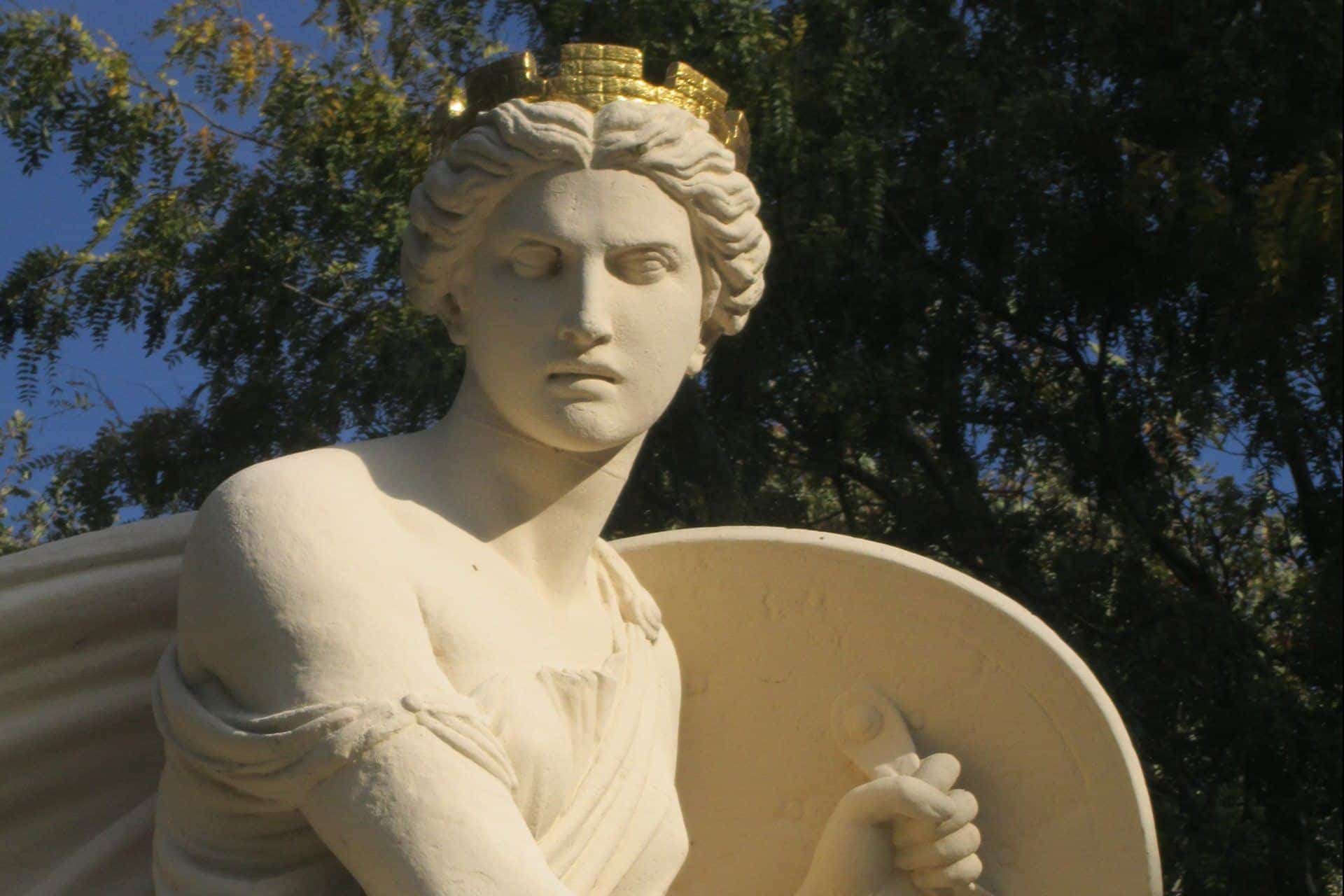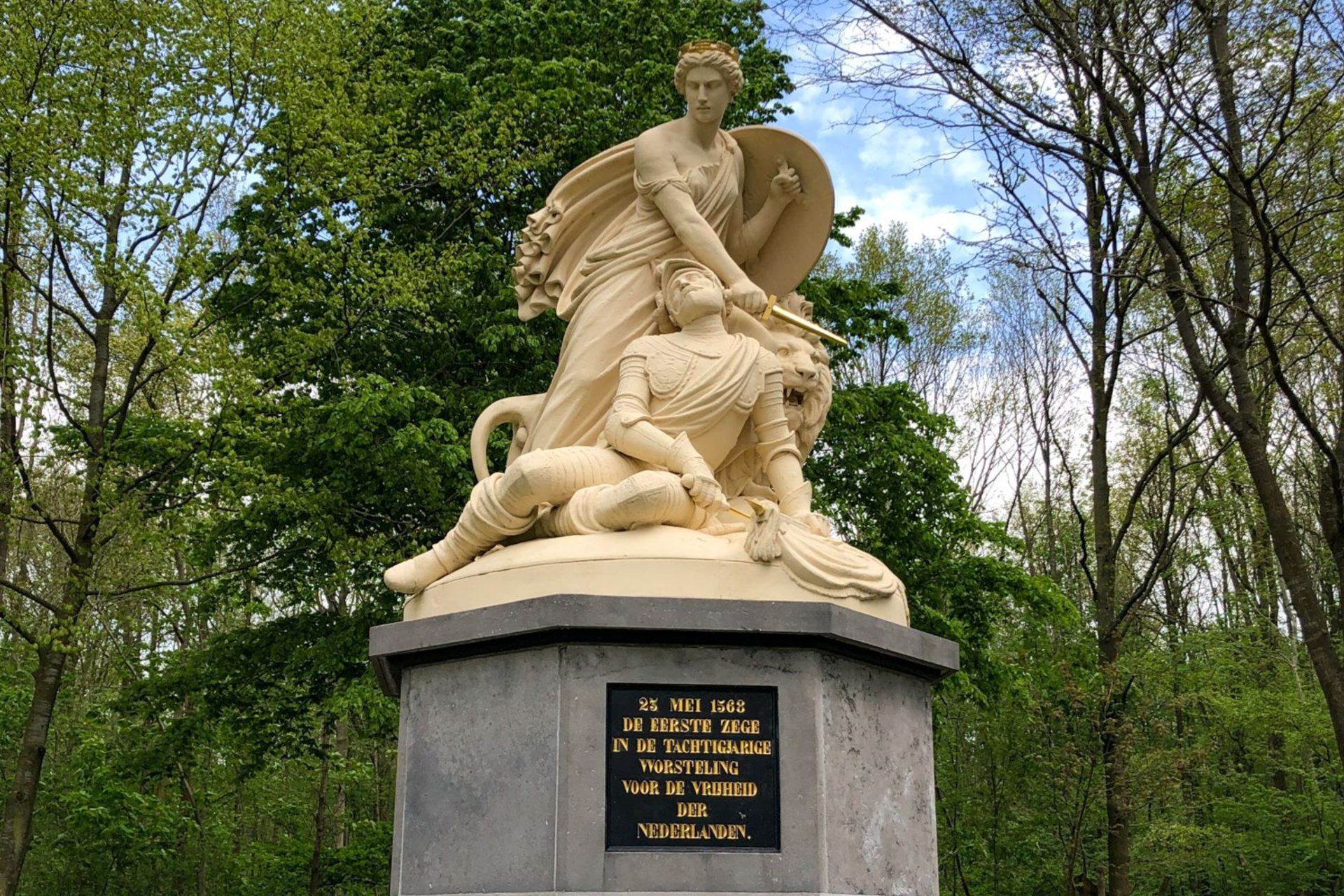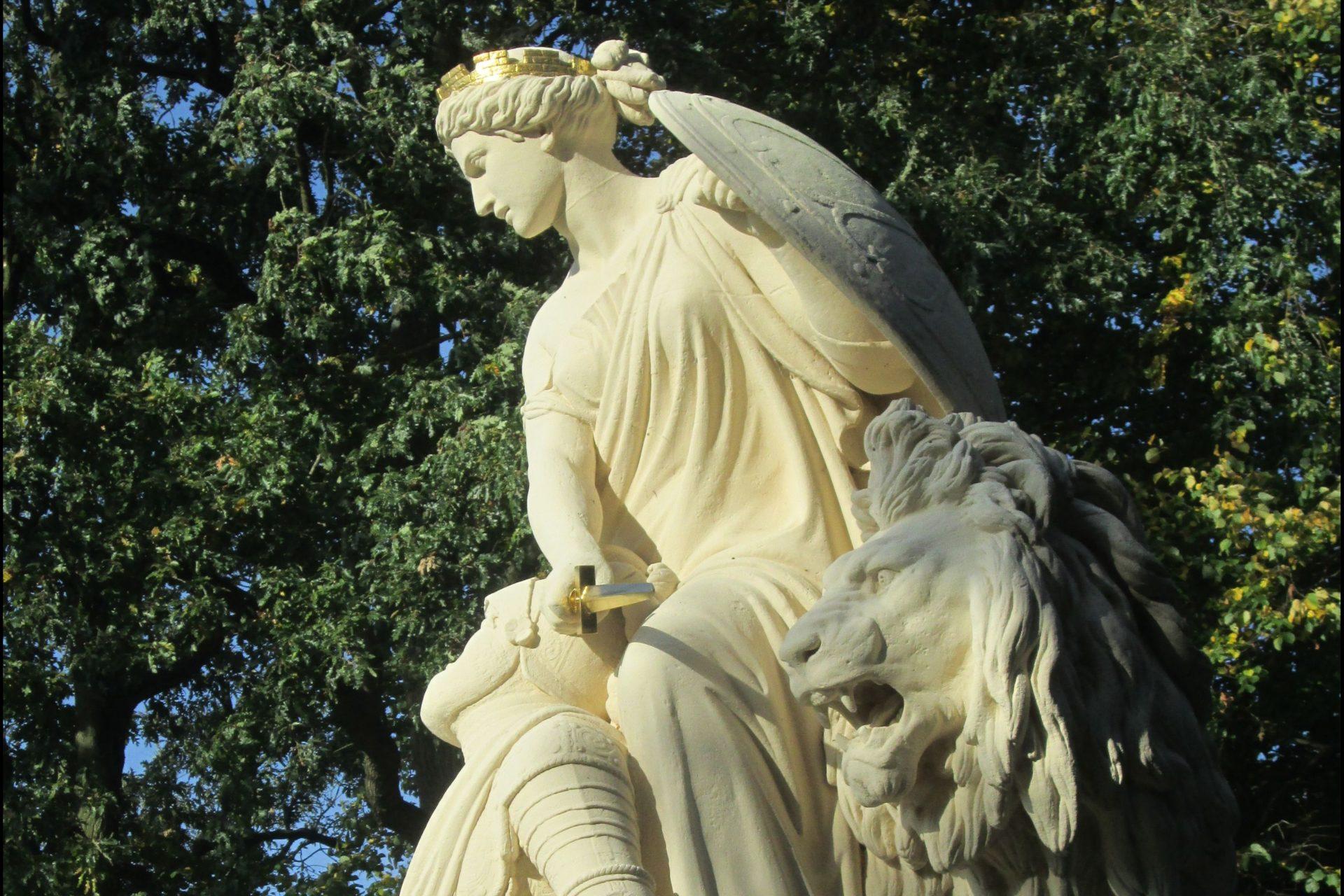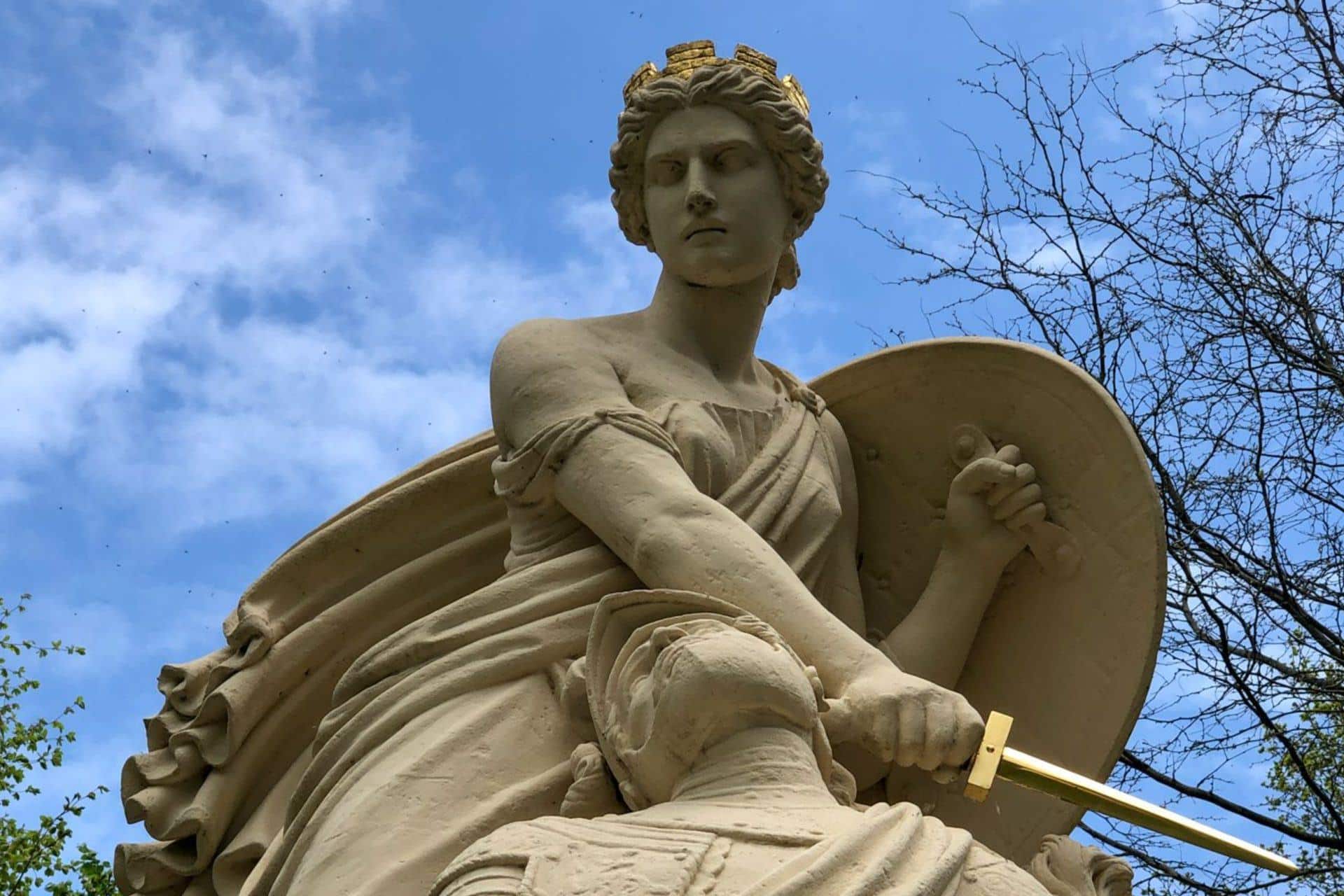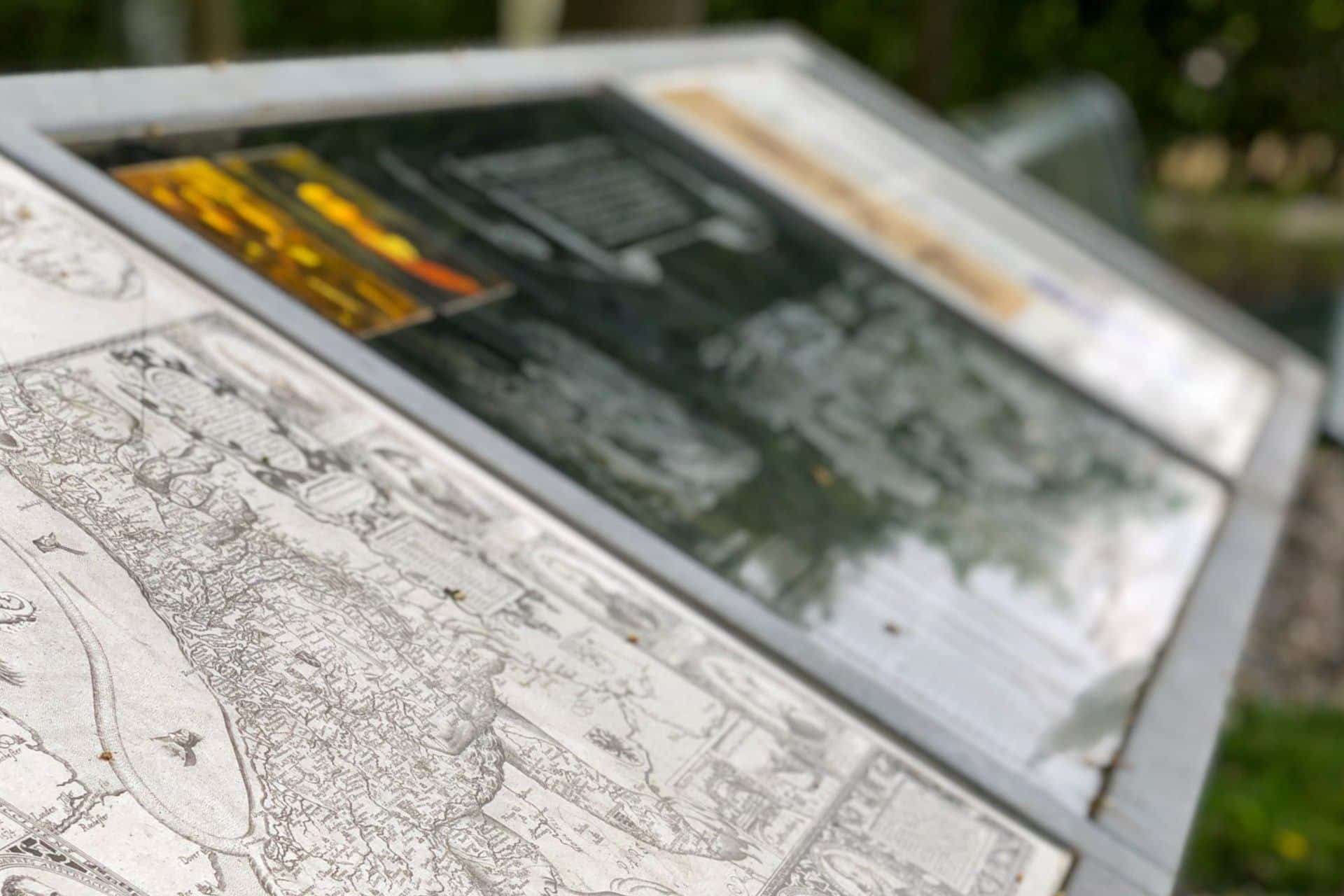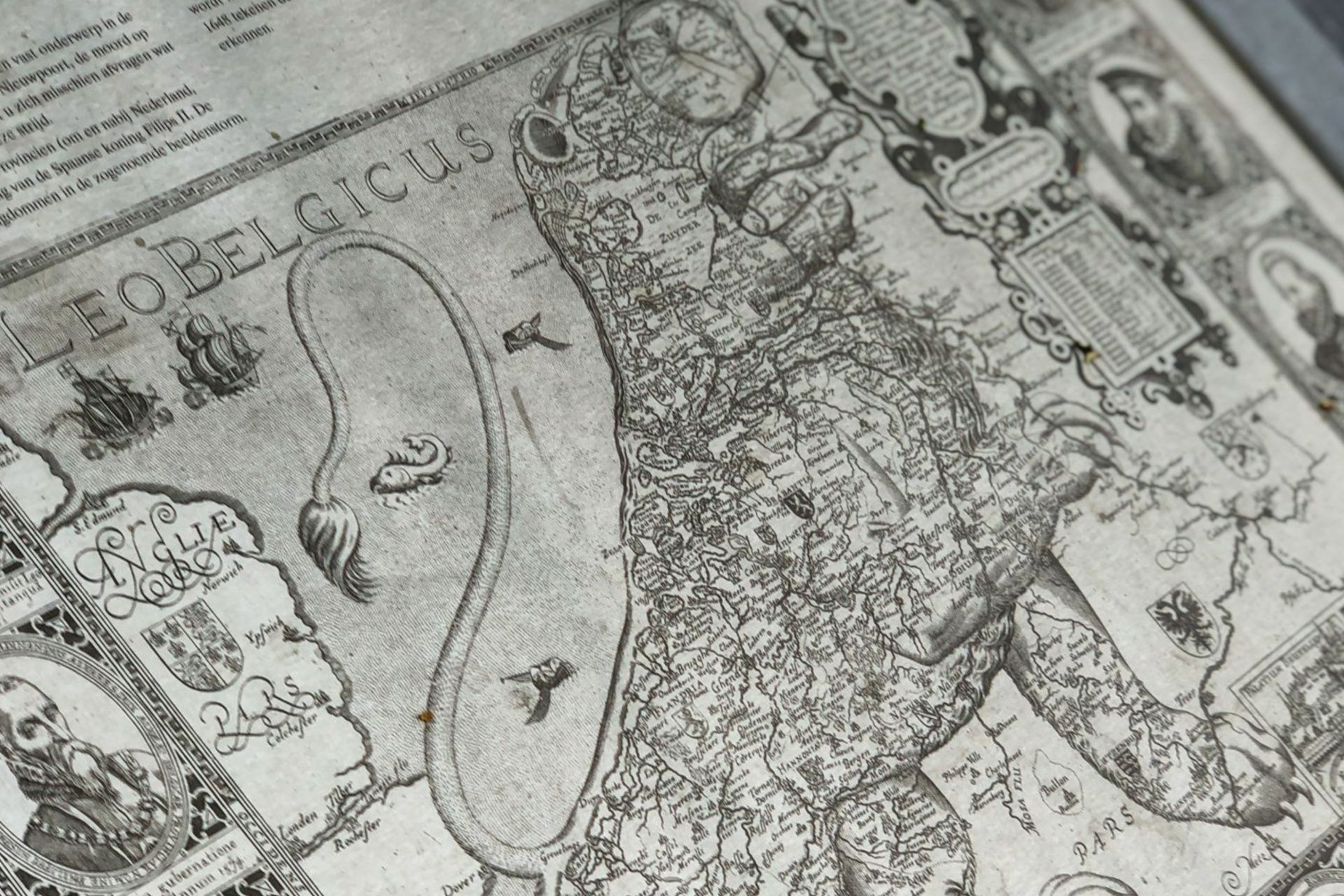Gedenkmonument Graaf Adolf
This memorial in Heiligerlee was erected in memory of the fallen Count Adolf of Nassau (1540-1568). The count was killed during the Battle of Heiligerlee. The Battle of Heiligerlee is considered the first military success of the Eighty Years' War.
Location
Heiligerlee
Year built
1873
Designers
J.H. Egenberger and P. Schenkenberg van Mierop
Sculptor
J. Geefs
Building Style
Classicism
Special feature
The 1873 poplar was nominated for Tree of the Year in 2023!
Owned by Monumentenbezit
Since 2016
Wheelchair accessible
Yes
Visitor information
You can visit Count Adolf of Nassau's monument free of charge.
Visiting address:
Provincialeweg, 9677 PA Heiligerlee
The Dutch Revolt (1568-1648), or the Eighty Years' War, is an illustrious period of our national history. Engraved in our collective memory are the Battle of Nieuwpoort, the assassination of William of Orange and the Plakkaat van Verlatinghe. Less well known is the Battle of Heiligerlee. In this battle, Count Adolf of Nassau, younger brother of William of Orange (1533-1584), was killed. Van Nassau was born in 1540 at Dillenburg Castle, which was owned by his parents Willem de Rijke and Juliana van Stolberg. This monument was erected for him.
The Battle of Heiligerlee was the first military success of the revolt. William of Orange was seen as the leader of the revolt against the sovereign Philip II (1527-1598). Van Oranje tactically retreated to Dillenburg Castle. In January 1568, all his possessions in the Netherlands were confiscated. Together with his brother Louis of Nassau (1538-1574), he decided to raise an army to drive the Spaniards out of the Netherlands and recover his possessions. This required many soldiers. In recruiting, William received help from his four brothers: John, Henry, Louis and Adolf.
Only 80 years later, on May 15, 1648, was peace signed and the sovereignty of the Republic recognized.
The Dutch soldiers moved toward Winschoten on the night of May 22-23. In a nearby town, a Spanish army force was holding out; they were waiting for reinforcements from the south. Nevertheless, they decided to follow William of Orange's army towards Heiligerlee. The Spanish troops were lured into the swamp and surrounded. The Spanish relief troops came too late. After only two hours of battle, the first victory for the Dutch rebels was a fact.
The only 27-year-old Adolf of Nassau was killed during the Battle of Heiligerlee when his runaway horse ran into enemy Spanish troops and was unable to escape. Van Nassau's death is immortalized in the fourth verse of our national anthem:
"Life and property together, I have not excused either,
My brothers high in name, have also shown this.
Count Adolph remained in Vrieslandt in the battle,
His soul in eternal life, expects the last day."
For more than 250 years, there was nothing in Heiligerlee that recalled the battle of 1568. Until in 1826 a memorial to Adolf of Nassau was erected. The initiative came from natural history professor Theodorus van Swinderen. The monument originally consisted of a five-meter-high memorial pole topped by an urn.
However, the memorial post was poorly maintained and consequently fell into disrepair. So in 1868, on the occasion of the 300th anniversary of the battle, it was decided to hold a competition to replace the dilapidated monument. The design 'The Independence of the Netherlands' by J.H. Egenberger and P. Schenkenberg van Mierop won and was executed by the Belgian sculptor J. Geefs. That design can still be found today in Heiligerlee.
What do you see in the monument? The struggle of the Dutch people against the Spanish occupiers is symbolized by a three-dimensional sculpture group. In front is the dying Adolf of Nassau who represents the Dutch struggle for independence. He is protected by the Dutch virgin, who stands with shield and drawn sword above the mortally wounded Adolf. To the side of the virgin you can see Leo Belgicus, the Dutch lion, looking menacingly toward the south from where the Spanish ruler came.
During the solemn unveiling in 1873, by King William III, a black poplar (populus nigra) was planted opposite the statue at the same time. With a circumference of 5 meters, this is one of the thickest trees in the province of Groningen. The black poplar symbolizes death and mourning.
The monument has been owned by Monumentenbezit since 2016. In 2018, we unveiled a new information board in honor of the commemoration of the Battle of Heiligerlee.

